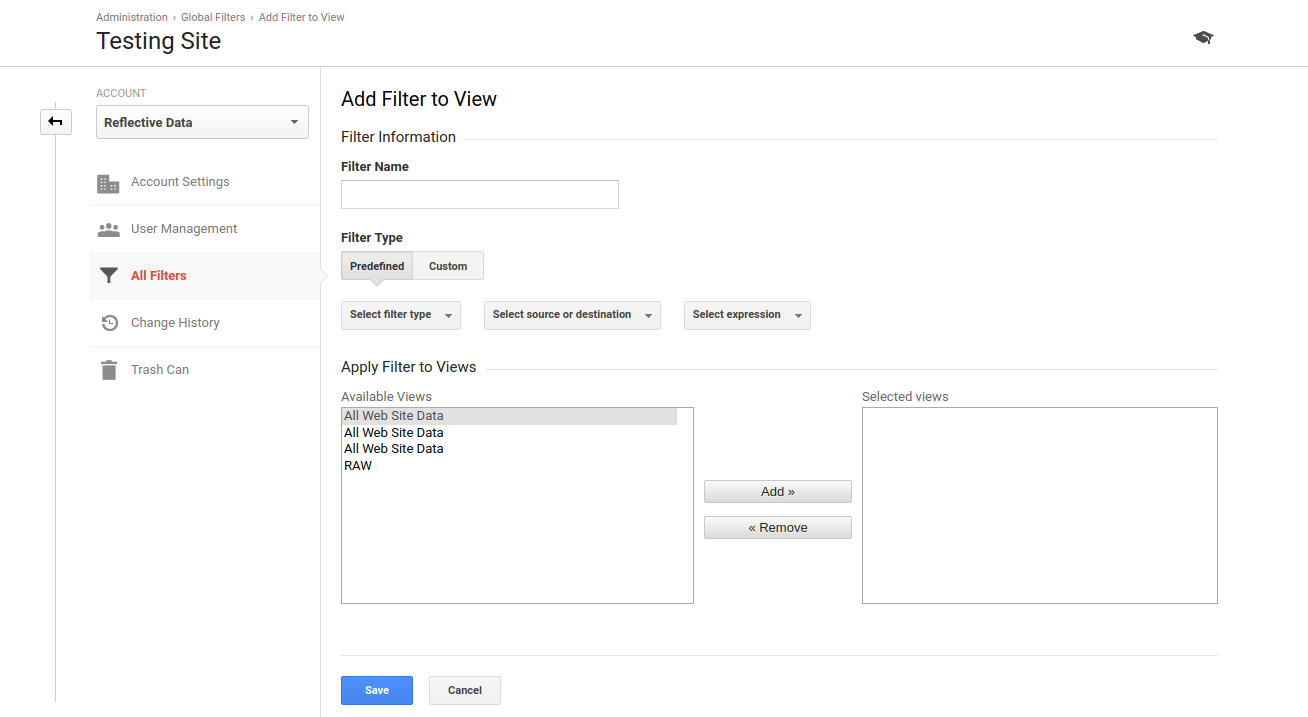In Which Order Does Google Analytics Filter Data for Dummies
In Which Order Does Google Analytics Filter Data Can Be Fun For Everyone
Table of ContentsThe Single Strategy To Use For In Which Order Does Google Analytics Filter DataSome Of In Which Order Does Google Analytics Filter DataThe Greatest Guide To In Which Order Does Google Analytics Filter DataExcitement About In Which Order Does Google Analytics Filter DataNot known Details About In Which Order Does Google Analytics Filter Data In Which Order Does Google Analytics Filter Data Fundamentals Explained
io" is the site as well as if I most likely to the homepage as well as click some various other web pages like signup page, it reveals me in the real-time report popping-up as how we established in the filters. This page is the of web site and also you can see the sub-domain highlighted as.
Similar to the previous procedure, we have to develop a new filter as mentioned in the last steps - In Which Order Does Google Analytics Filter Data. in this new filter, I'm naming it as and I'm selecting After that I'm typing the filter pattern as In this filter pattern, the pipe symbol () is consisted of to attach any kind of various other hostname that you desire to include in addition to the other hostnames
Getting My In Which Order Does Google Analytics Filter Data To Work
This is how you can go check your site as well as return view in real-time reports. The real-time report currently reveals the adjustments that you made when developing that filter. In this situation, the Fractured page discusses about link of the web page i. e when the Web page URL being repeated the very same, leaving out lower or any type of minute aspects.
Now develop a new filter and also I name it as. Choose and also select the filter areas.

An Unbiased View of In Which Order Does Google Analytics Filter Data
The adhering to instructions will certainly walk you via the process: Produce a new Google Spreadsheet (or open an existing one). From the add-on description web page, click the "+" in the leading right corner to add this add-on to your spreadsheet.
Click "Approve". The add-on is currently installed. A "Google Analytics" submenu should now appear in go to this site the Attachments menu. Records can be created manually or with the assistance of the add-on's record development device. To make use of the tool, pick "Attachments" > "Google Analytics" > "Create a New Report" from the food selection bar.
This is intentional. In Which Order Does Google Analytics Filter Data. The tool is implied to help get you started and also give you with the info you may not know off the top of your head. The remainder of the areas will certainly need to be entered by you. If you have any type of inquiries about what to place in each field, see the recommendation at the base of this web page.
In Which Order Does Google Analytics Filter Data Fundamentals Explained
It can be a sheet in the spread sheet you're presently in, or a various spread sheet altogether (as long as you have edit access to that spreadsheet). To print the outcomes to a various spreadsheet copy the spreadsheet URL and paste it right into the cell to the right of the "spreadsheet-url" criterion.
This opens a record scheduling dialog where you can transform organizing on and off, as well as set just how often your record will run. To transform scheduling on, examine the box classified "Enable reports to run instantly." When organizing is enabled you can make use of the pick dropdown to manage the moment and regularity.
When scheduling records, make certain there is lots of time between when you produce the schedule and when the schedule is supposed to run. Call Summary This is the report name. It will also be the name of the sheet where the record information is composed.
The following expression returns the last day of the previous month: =EOMONTH(TODAY(), -1) The end date for i thought about this bring Analytics data. Requests can define an end day formatted as YYYY-MM-DD, or as a family member date (e. g., today, the other day, or Ndays, Ago where N is a favorable integer). You can likewise use Sheets day features to specify this worth programmatically.
Metrics can be defined in one of two formats: For instance, every one of the following stand worths for the Metrics parameter. ga: sessions, ga: bounces ga: sessions ga: bounces ["expression": "ga: sessions/ga: customers", "alias": "Sessions per Customer", "format, Type": "DRIFT", "expression": "ga: overall, Events/ga: pageviews", "pen name": "Occasions per Pageview", "format, Type": "DRIFT"] For many use instances, a listing of statistics IDs is the why not find out more simplest way to define the Metrics parameter.
Examine This Report about In Which Order Does Google Analytics Filter Data
The full listing of dimensions as well as metrics as well as their valid combinations is offered utilizing the Dimensions as well as Metrics Explorer. Name Description A list of dimensions to query. Measurements can be defined in one of 2 layouts: As an example, every one of the complying with are valid values for the Metrics parameter. ga: source, ga: tool, Group ga: resource ga: gadget, Classification ["name": "ga: source", "name": "ga: tool, Category"] For the majority of utilize instances, a listing of dimension IDs is the easiest way to define the Capacities parameter.